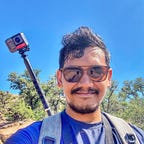How AI tools can lead to a new Era of Misinformation and How to Control it
Images, voices, and even Videos created by AI have become so realistic, and it’s easy to influence people over Social Media
There are a lot of recent talks on how Artificial Intelligence (AI) can reshape society. The rise of AI has become the center of discussion, and many people still do not understand the risks associated with the misuse of AI tools.
Can you differentiate between Real and Fake?
The rapid advances in artificial intelligence (AI) technology have ushered in a new era of information creation and dissemination. With the rise of deepfakes, AI tools can now be used to create fake videos and audio with remarkable accuracy, making it difficult to distinguish between what is real and what is fake.
This development has serious societal implications, particularly concerning misinformation, chaos, and blackmailing. A simple example would be the recently published fake photos of a political leader getting arrested and jailed. I have also watched a fake video of another leader stating something he never said.
Influencing People with Fake Information and Aftermath
The potential for misuse of deepfake technology is alarming. It can be used to create convincing fake videos of political leaders, celebrities, or anyone of interest saying or doing things they never did.
This could lead to political chaos, social unrest, and even blackmail. For instance, a deepfake video of a politician confessing to a crime they did not commit could be used to pressure them into taking a particular course of action.
The age of misinformation is already upon us, and deepfakes could worsen it. People might start believing fake news and information as true, leading to an erosion of trust in society’s institutions.
It could also lead to widespread panic, confusion, and chaos. Deepfakes could be used to undermine election results or even cause conflicts between countries. If you are aware of the Cambridge Analytica scandal, you know what I am talking about.
Impact on Developing Countries
I am a bit worried about developing countries where a number of people are not educated, and they are always clashing with each other.
I have seen a lot of clashes happening in the Indian subcontinent over the simplest issues because people often share things on social media without even verifying the misinformation.
Photoshopped photos are often shared on social media, and I have become astonished looking at the reactions and comments; as almost everyone believed that. Even many of those were educated.
If many people cannot simply differentiate a photoshopped photo, they are unlikely to identify AI-generated audio and video.
Solutions?!?
Fake Audio/Video Detection: One solution to the problem of deepfakes is to develop better technology for detecting them. As deepfake technology advances, so too must the technology used to detect it.
AI algorithms can be trained to identify deepfakes, which could help prevent their spread. Social media platforms and other websites could also implement stricter policies around the use of deepfakes to prevent their spread.
AI misinformation awareness program: Another solution is to raise awareness of the issue. People need to understand the potential dangers of deepfakes and how they can be used to spread misinformation.
This could be done through public awareness campaigns, school education, and media coverage of the issue. I think, just like privacy and security awareness program, there should be AI misinformation awareness programs.
Strict Application Development Guidelines: The AI tool development guidelines should be strict. One existing example is OpenAI’s Dall-E2, which does not generate people’s faces. New tools should be restricted from the usage of real people’s faces and voices.
Strict Law Enforcement: Responsible people should be punished for spreading misinformation and creating chaos/riots for personal or organizational benefit.
Concluding Remarks
AI-generated visuals represent a significant challenge to society. The potential for misuse is vast, and it could spread misinformation, chaos, and even blackmailing.
However, there are solutions available. By developing better technology for detecting deepfakes, raising awareness of the issue, or restricting AI tools from using real people's faces and voices, we can mitigate the potential harm caused by this technology.
Ultimately, it is up to all of us to ensure that we use technology responsibly and for the betterment of society. Let’s all be sincere and hope for the best.
